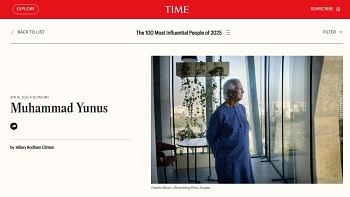Master Stroke

Artworks by Professor Hamiduzzaman Khan
“I've always been fond of, had the knack for watercolours,” admits effacing Professor Hamiduzzaman Khan, whose solo exhibition is on at Galleri Kaya (House 20, Road 16, Sector 4, Uttara). Although he graduated in painting from the Institute of Fine Arts (DU), this aspect could not be wholeheartedly pursued once he started teaching there, switching to and specialising in sculpture. In this instance, it all began with a watercolour workshop organised by Kaya and one of Dhaka's luxury hotels. Praise from contemporaries Rafiqun Nabi and Samarjit Roy Chowdhury egged Hamid into launching the show, the result of twelve months' work.
Hamid's travels around Bangladesh -- to Habiganj and Mymensingh -- enabled him to capture amazing scenes. "I could feel the beauty of Bangladesh's waters; being on the river is quite a different experience." Initially he made numerous sketches, rocking in a boat on Habiganj's swollen monsoon lakes (haor), a time during which light conditions can change rapidly. The darkness of cloud cover is reflected in some hooded paintings, with Hamid expressing his immediate emotions. Drawing from his expertise of sculpting after sunset, these paintings symbolise "solid, massive form-filling, a concept of great importance to me."
Mymensingh's old Brahmaputra River, a trickle in winter, but hugely dangerous in the monsoon, and the lithe kash flowers, attracted Hamid to spend three days on a boat, fishing and painting.
An accident in the late '60s resulted in a head injury requiring plastic surgery. He travelled to the UK by cargo ship, reaching Dundee, Scotland in five weeks, a thoroughly pleasant journey, he found. Following the suturing of the gap in his skull in Edinburgh, Hamid convalesced for six months, visiting, among others, the British and Victoria & Albert Museums, and the Tate. The Constables he saw would later inspire his watercolours. More cultural insights were gleaned during his Parisian trip, where a retrospective Alberto Giacometti sculpture exhibition was to play a pivotal role in his development as a sculptor. Onwards to Rome, Michelangelo's and the Laocoön group of sculptures at St. Peter's drawing him like magnets. "They had a deep impact on me; sculpture is a truly powerful living exhibition."
Thus freshly infused, Hamid joined the sculpture department, Institute of Fine Arts. Declining a scholarship to further his talents in Shantiniketan, he chose Baroda for his Masters instead, where he "felt the atmosphere." At an exhibition held at Bombay's Taj art gallery celebrating the university's silver jubilee, Hamid's chosen sculpture caught legendary artist, Hussein's eye by virtue of being free standing, the rest being on pedestals, the norm then. Hamid recalls spending an exciting hour with Hussein, who was impressed with his innovative style; his "derived, individual style" was highlighted in an Indian Express newspaper review. Immersing himself in sculpture, Remembrance '71 was displayed at the Shilpakala's first national exhibition, bestowing upon him the national award, and establishing him in the field. The piece was featured in a book published by Baroda University a few years ago. "I was thrilled to be one of two Bangladeshi artists chosen for the book."
Of his numerous achievements, Hamid considers his first substantial government commission in 1981, a 24-ft high geometric bird's family in front of the President's house, and his 12-ft bronze, Hamla, at Sylhet Cantonment to be special honours.
Today, Hamid prefers working with sheet metal, easier to handle for large fragments when making welded sculptures. Outdoor work being close to his heart, he wishes to have a garden exhibition later this year. His sculpture park in Savar is already a work in progress, where foreign sculptors could hold symposia, creating an interesting forum for local artists. Plans to have an oil and acrylic show shortly are also in the pipeline. Only last month, Hamid was appointed director of the Asiatic Society of Bangladesh's, Gallery of Fine Art, which recently hosted visiting European artists. "The country's young buyers seem very promising for the future of Bangladeshi art," says the artist.
The exhibition at Galleri Kaya ends on March 21 2008.

 For all latest news, follow The Daily Star's Google News channel.
For all latest news, follow The Daily Star's Google News channel. 



Comments